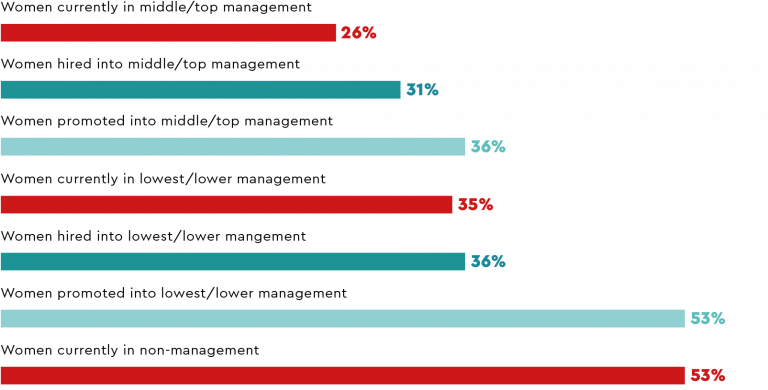Despite having 53% women in non-management, top management is comprised of only 21% women in the Media industry – women are considerably underrepresented. So, where do women get lost? The Media industry sees the most significant drop in women’s representation between non-management and lowest management. Why?
Promotions do not seem to be the problem. Women are promoted into lowest and lower management at similar rates as their representation in non-management, which contributes to increasing their representation on these levels. They are also promoted into senior management at slightly higher rates than their share in lowest and lower management. Companies in the Media industry are utilizing promotions well to advance women along the talent pipeline.
However, particularly for lowest and lower management, the share of newly hired women is relatively low. Media companies are using new hires mainly to increase the percentage of women in middle and top management.

The hiring gap for management is particularly high between the ages of 31 and 40 and much smaller between 41 and 50. This points to a promising pool of talents (currently underutilized) to diversify the talent pipeline and indicates that it is still possible to take significant career steps after 40.
In lower and lowest management, men mainly work full-time. In contrast, women are working in relatively low employment percentages. This likely puts women at a disadvantage regarding promotions, as full-time seems to be expected for middle and top management positions. Interestingly, in non-management, slightly more men work part-time than in other industries.
Media companies must leverage recruitment to increase the share of women in management. What are some concrete steps to make better use of recruitment?